By Andrew J. Rotter
The men and women who imagined and then built the atomic bomb thought they were doing something different from what makers of “conventional” weapons did. They believed they were engaged in something special.
No one recalls the names of those who developed napalm and other incendiaries. No other single weapons project received $2 billion in U.S. government funds. Radar cost more, but it was not a weapon as such. Knowing what they knew about the power of a nuclear chain reaction, and whatever they may have guessed about the impact of radioactivity beyond the perimeter of the blast, some scientists and some government policymakers felt a need to think especially hard about how and against whom the atomic bomb should be used.
General Curtis LeMay was permitted by Air Force strategic doctrine to firebomb Tokyo with many tons of incendiaries, but he made the decision to launch the attack himself. There were no high-level meetings to discuss the use of napalm. The opposite, of course, was true for the atomic bomb.
There was, as one of the scientists, Princeton’s Robert Wilson, suggested, an assumption in the air that, if a bomb became feasible while the enemy––any enemy––was still in the field, it should be used. It would have been, as Wilson put it, “unrealistic and unfair” to have asked the scientists to stop their work and the United States to stop its fight.
President Franklin D. Roosevelt seems to have assumed this, and when, in late 1943, the Manhattan Project’s military director, Brig. Gen. Leslie Groves, began retrofitting a Boeing B-29 Superfortress bomber, largely designated for use in the Pacific Theater, to carry the bomb, it was clear that he, too, planned to use his weapon against any and all enemies. Roosevelt’s and Grove’s decisions were the ones that mattered most, and most of the scientists working on the bomb, like Robert Wilson, accepted this.
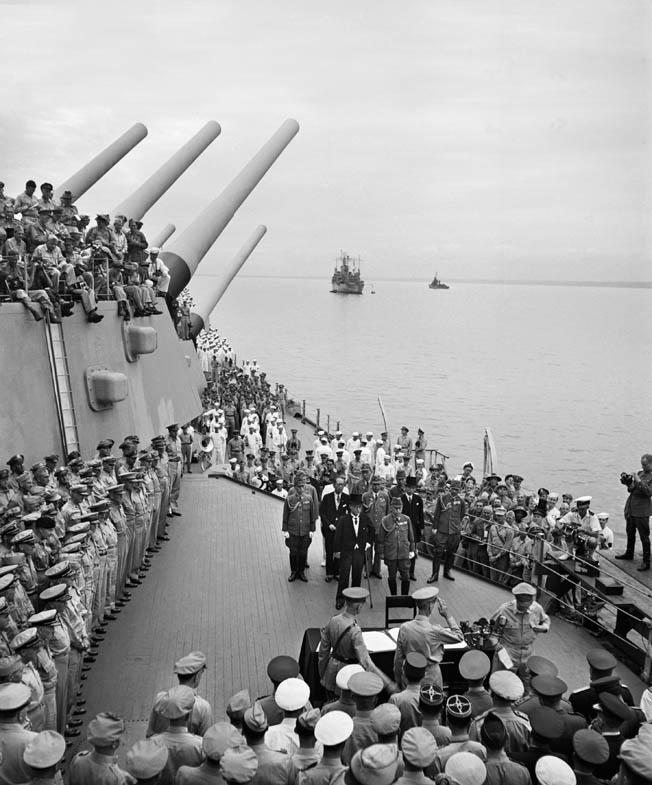
But even before Germany had surrendered, several of those involved with the Manhattan Project, convinced that the great evil of Nazism had been subdued and the danger of a German atomic bomb had passed, argued that the bomb ought not to be used against Japan. In other words, the target of the bomb should be understood as having been defeated, and the bomb’s aiming point not merely shifted to another nation.
It must be said that there was not much sympathy for the Japanese themselves—while the Jewish refugee scientists especially regarded them as less malignant than the Nazis, most also remembered Pearl Harbor, read the news of the ferocious island-hopping campaign, and shared the view held by most white Americans that the Japanese were not quite human.
Instead, the scientists’ major concern was that combat use of the bomb against Japan would set a bad precedent for the rest of the world and would in particular antagonize the Soviet Union, which would feel threatened by the U.S. attack and would consider it necessary to race ahead with a bomb-building project of its own.
Leó Szilárd: Postwar Prophet or Opportunist?
Niels Bohr, the Danish physicist and a member of the British mission to the Manhattan Project, was an early advocate of informing the Soviet Union about the bomb project, thereby hastening a return to “the republic of science” and an “open world” of information exchange. Bohr had traveled to the bomb makers’ laboratory at Los Alamos, New Mexico, in 1944 and had there advocated, in his elliptical way of speaking, the use of the bomb as a symbol of international hope and the opportunity for international cooperation.
He did not, apparently, recommend specifically against using the bomb in Japan, but he stressed the singular evil of Hitler and confidently told Robert Oppenheimer, the civilian head of the project, that “nothing like” Nazism “would ever happen again.”
Czech-born nuclear physicist Leó Szilárd went further. He had energetically promoted the bomb, and to him belongs a good deal of credit for harassing U.S. authorities into taking the project seriously early in the European war. Gradually, however, Szilárd’s gifts as a scientist became less relevant to the task of crafting the bomb itself.
In early 1945, as Germany’s defeat loomed, Szilárd decided to talk to Roosevelt about the urgent need for postwar control of nuclear weapons. He solicited a letter of introduction from Albert Einstein, gained permission to take his cause to the president from University of Chicago physicist Arthur Compton, and secured, through Eleanor Roosevelt, an appointment at the White House for May 8, 1945. When FDR died unexpectedly on April 12, Szilárd managed to reschedule with the new president, Harry S. Truman.
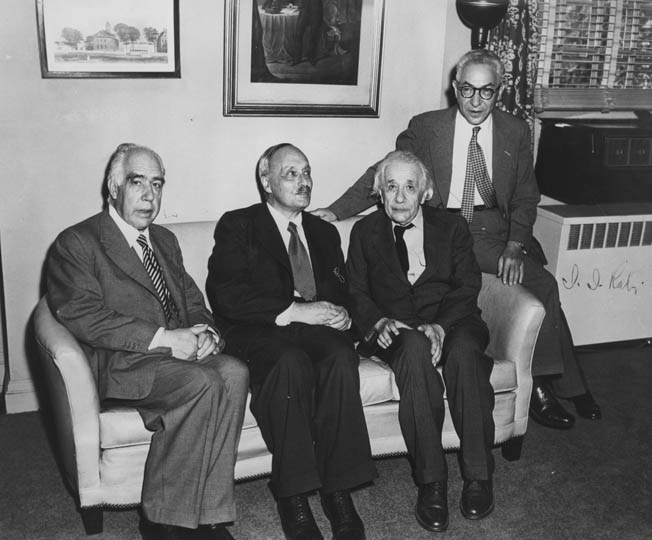
The day after Roosevelt’s death, James (“Jimmy”) Byrnes, Roosevelt’s director of War Mobilization and the man who would soon be Secretary of State, briefed Truman on the bomb, telling the new president that “we were perfecting an explosive great enough to destroy the whole world,” then adding that “the bomb might well put us in a position to dictate our own terms at the end of the war.”
For his part, Szilárd got as far as Truman’s appointment secretary, Matthew Connelly, who assured Szilárd that his boss took him seriously, then shunted him off to South Carolina for a meeting with Byrnes. The war in Europe ended on May 8, 1945, and the possibility of using the bomb against Nazi Germany ended with it.
Szilárd took Nobel Prize-winning physical chemist Harold Urey and University of Chicago Dean Walter Bartky along for support during his visit with Byrnes; the men arrived by train in Spartanburg, South Carolina, on May 28. Szilárd presented Byrnes with Einstein’s letter and read a memo that suggested dropping a bomb on Japan would probably move the Soviets more quickly to making a bomb of their own. Byrnes remonstrated. Groves, he said, had told him there was no uranium in the Soviet Union.
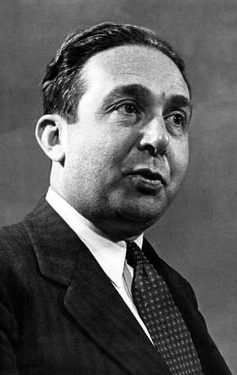
Having spent $2 billion on the bomb, not to use it against Japan would ultimately dismay Congress and make it difficult to get funding for nuclear research in the future. And, Byrnes implied, the Soviets, who seemed to him up to no good in the East European nations they had liberated from Germany, might be easier to deal with if the United States dropped an atomic bomb. More consistently than any other U.S. official, Byrnes saw the atomic bomb as a vital instrument of wartime and postwar diplomacy toward the Soviet Union and firmly believed that the Soviets should not receive any information about the bomb lest Stalin insist on a “partnership” the Americans must never offer.
At this point, Szilárd remembered, “I began to doubt that there was any way for me to communicate with Byrnes in this matter.” Szilárd and his colleagues took their leave in a fog of depression.
Szilárd returned to the Metallurgical Laboratory at the University of Chicago (dubbed the “Met Lab”) and discovered that he had, as he often had, generated controversy. The Army was angry that Szilárd had been permitted to get to Connelly and especially Byrnes. Bartky was reprimanded by Groves and scolded for giving Szilárd’s memo to Byrnes; Groves considered Szilárd “an opportunist” with “no moral standards of any kind.”
An Appeal to Henry Stimson
Arthur Compton loyally backed his scientists and, as the high-level Interim Committee (established by Truman in April 1945 and made up of Byrnes, Secretary of War Henry L. Stimson, Army Chief of Staff George C. Marshall, and other scientists and government officials) began its deliberations, he deputed James Franck, the head of Met Lab’s chemistry section, to write a report on the probable consequences of the bomb’s use. Franck had serious reservations about using the bomb and had in fact exacted a promise from Compton, in 1942, that if an American bomb was ready before Germany or another nation had one, Franck could object to its use at the highest level of government.
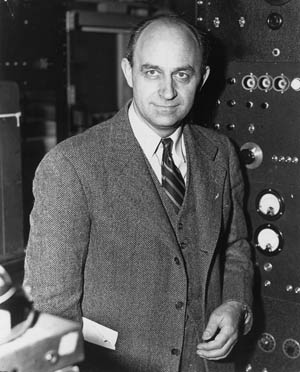
Franck rushed to his conclusions and sent his 13-page report to Stimson on June 11—though, as things turned out, it did not reach Stimson’s desk. Franck knew the reason why many were promoting the use of the bomb, or he anticipated it with remarkable acuity. Some said that using bombs would end the war quickly and thus save American lives. But Franck doubted that the first generation of nuclear weapons would be powerful enough to discourage the Japanese from continuing the fight.
Moreover, even if the bombs did shorten the war and thus keep American soldiers alive, that benefit “may be outweighed by the ensuing loss of confidence and wave of horror and repulsion” the world would feel if the bombs were dropped. The huge expense of the Manhattan Project, mentioned by Szilárd to Byrnes, did not require the bombs’ use; the American public would understand “that a weapon can be made ready only for use in an extreme emergency,” and that nuclear weapons were in this category.
The compelling reason to build the weapon had been the scientists’ fear that Germany might be building one too, but that was no longer an issue (the Germans were far behind in their efforts to master nuclear technology). Above all, using the bomb against a Japanese city would so shock the world as to make future control of nuclear weapons unlikely. According to the Franck Committee Report, the bomb was “something entirely new in the order of magnitude of destructive power.”
Given that, the report said that the way forward was to arrange a demonstration of the weapon in “the desert or [on] a barren island,” to which representatives from all nations, including of course Japan and the Soviet Union, would be invited. If the Japanese saw the awful power of the bomb, they might surrender. If the Russians and others saw that the Americans had the bomb but were too merciful to use it, they might be persuaded to place nuclear weapons work under international control.
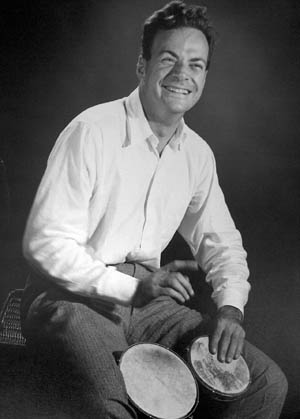
Military or government officials either remained unaware of the Franck Report or ignored it. Still, dissent continued. A gas-diffusion engineer (gas diffusion had been one method scientists considered as a way of producing weapons-grade fissionable nuclear material) named O.C. Brewster got a letter through to Stimson on May 24 in which he insisted that if the United Sates dropped the bomb, “We would be the most hated and feared nation on earth.”
George Harrison, Stimson’s special assistant, wrote to his boss on June 26 of scientists’ concerns about the bombs’ use leading to a nuclear arms race. In July, Szilárd tried again, circulating at the Met Lab a petition calling on the government to refrain “on moral grounds” from using the bomb against Japanese cities. He got 53 signatures at first, then toned down his language slightly and gained 17 more.
But he could not win over the lab’s chemists, nor could he persuade Oppenheimer or Edward Teller, both at Los Alamos, to sign. Oppie refused even to circulate the document. The petition went through channels to Groves, who sat on it until August 1, when he sent it to Stimson. President Truman, who had been in Potsdam and was then returning home aboard ship, never saw it.
Objections From George Marshall and Joseph Grew
There were also several high-ranking doubters, men involved in atomic bomb decision making, who shared, perhaps independently, the scientists’ concerns about dropping the bombs on Japanese cities, or who had different concerns that nevertheless brought them to some of the same, troubled conclusions. George Marshall did privately urge Stimson, on June 29, to confine the use of the bomb to a genuinely military target. When the administration instead agreed to target Hiroshima and other cities, Marshall kept his counsel.
Joseph Grew, the Undersecretary of State and former Ambassador to Japan, urged Truman in late May to signal to the Japanese that even in surrender they could retain control of their political system, meaning that the office and the person of the emperor would be preserved.
Grew’s proposal came in the aftermath of the latest firebombing attack on Tokyo; the atomic bomb lurked only in shadow form behind his argument to the president. Truman sent Grew off to see Stimson and several military leaders, who objected that such a concession would signal weakness to the Japanese even as the battle continued for Okinawa.
Most forceful among the dissenters was Ralph Bard, Undersecretary of the Navy and a member of the Interim Committee. Bard was convinced that the Japanese were looking for a way to capitulate. If perhaps Japan was warned about the bomb, even a few days before it was to be used, and if perhaps the president could make “assurances” to Tokyo regarding the emperor, the Japanese would surrender unconditionally. Bard saw nothing to lose by trying.
Truman’s Decision to Use the Bomb
All these dissents, doubts, and inklings of doubt were overridden by the determination among bomb builders and policymakers to use the new weapon as long as the enemy refused to surrender unconditionally as the U.S. government defined the adverb. The strenuous concerns of Szilárd and Franck, along with the more qualified ones of Marshall, Grew, and Bard, could not match the combination of assumption and conviction on the part of those who saw no reason not to use the bomb and various and substantial benefits to using it.
To some small extent, the Interim Committee’s discussion of how to use the bomb sometimes slipped into discussing whether or not to use it at all. Ralph Bard, after all, concluded that the Japanese should be warned in advance about the bomb and offered a guarantee that the emperor would be retained. In summarizing the deliberations, R. Gordon Anderson, who took notes at the meeting, recorded “general agreement” with the conclusion that “we could not give the Japanese any warning” that the bomb was coming.
Some members of the committee had talked at lunch, for around 10 minutes, about the possibility of using a noncombat demonstration of the bomb to convince the Japanese to give up. Everyone hearing this argument objected to it for at least one of several reasons. The Japanese could attack the demonstration site or the plane delivering the bomb. The bomb might be a dud. Even if it exploded, Japan’s “determined and fanatical men,” in Compton’s words, might be unimpressed. America’s war prisoners might, somehow, be placed in the demonstration area. The element of surprise, crucial to shock the Japanese, would be lost. And, finally, someone added, would the threat of the bomb or its noncombat display move a people whose cities had already been firebombed?
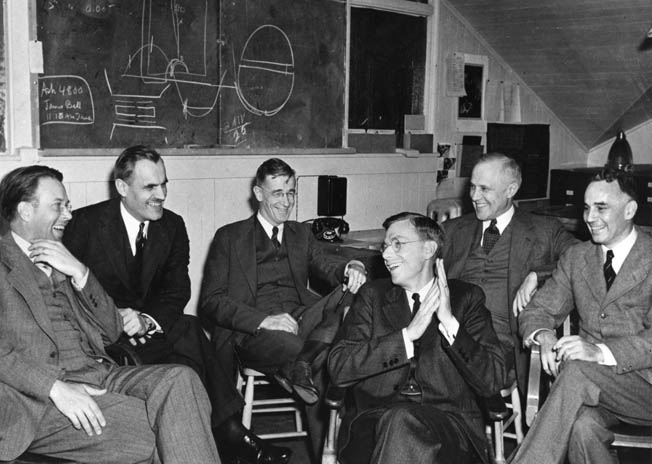
The Interim Committee had been treating the atomic bomb as something special, but its membership still was not convinced that in every respect it was, or that its victims would see it so. In June the committee agreed that the bomb should be used as soon as it was ready.
Still, Stimson had grave misgivings about the bomb’s moral implications and, when a scientists’ Target Committee placed the city of Kyoto at the top of its objectives for an atomic bomb crew, Stimson, who had twice visited the city, demanded its removal. Kyoto was a cultural and religious center that would become, if destroyed, an example of American cruelty, and, if spared, a symbol of American decency and restraint. No amount of entreaty from Groves would persuade the secretary to put Kyoto in the crosshairs. Stimson also took it on faith that civilians should be spared “as far as possible” from the weapons of war.
Harry Truman exhibited on the atomic bomb issue a combination of feigned indifference and zealous overinvolvement characteristic of the insecure. There is little evidence that he saw the bomb as a moral matter, at least before the second bomb was dropped on Nagasaki. He nevertheless felt compelled to tell himself, like Stimson, that the atomic bombs whose use he authorized, or to whose use he acceded, were to be aimed at military targets. Stimson had told him that the “most desirable target” of the bomb “would be a vital war plant employing a large number of workers and closely surrounded by workers’ houses.” Truman accepted this recommendation.
Anyone who knew, as Stimson and Truman did, what the firebombs had done to Hamburg, Dresden, and Tokyo, and what the test of the plutonium bomb in New Mexico would soon reveal, also knew that these weapons unleashed upon cities did not magically kill only their military inhabitants or destroy factories and “workers’ houses” while sparing tea shops, hospitals, and the homes of teachers.
Here again was self-deception—undertaken at the highest level and on the most critical of issues. Probably, like Stimson, Truman told himself that sparing Kyoto (and, belatedly, Tokyo) absolved him of charges that he was targeting innocents. Having thus persuaded himself that he was merely engaged in the accepted strategic practice of war, Truman slept soundly on those midsummer nights.
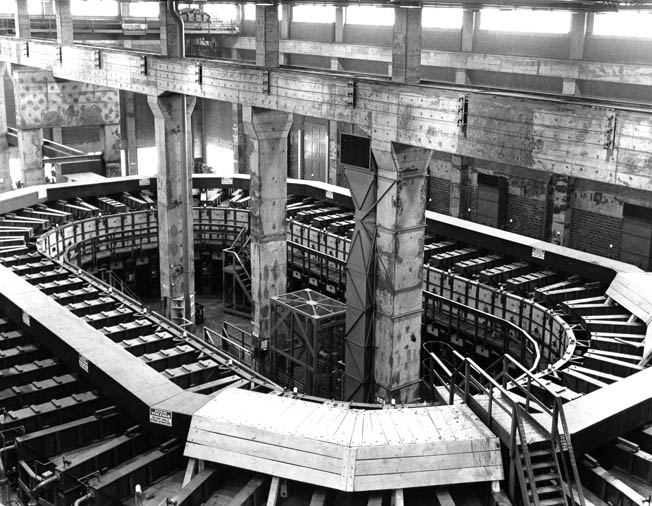
“Tickling the Dragon’s Tail”
That decisions needed making, that self-delusion seemed necessary, were the results of the Manhattan Project’s success in producing a functional atomic bomb. While Truman struggled to find his footing as president, while Byrnes, Groves, and especially Stimson tutored him about the bomb, while the Interim Committee discussed how to use the bomb, and scientists, generals, and government officials debated targets, Oppenheimer’s army in New Mexico labored to solve the bomb’s technical problems and thus fulfill its destiny.
Szilárd, Franck, and several others thought the bomb should not be used automatically against Japan. Oppenheimer was having none of it. He turned aside Szilárd’s provocative petition and threw himself so fully into the work of finishing the plutonium test bomb that Groves wondered if he would have time for policy meetings in Washington, and friends worried about his health.
There remained difficulties with the implosion mechanism, the series of detonators that needed to fire simultaneously “within a fraction of a millionth of a second,” if the bomb’s plutonium was to chain react properly.
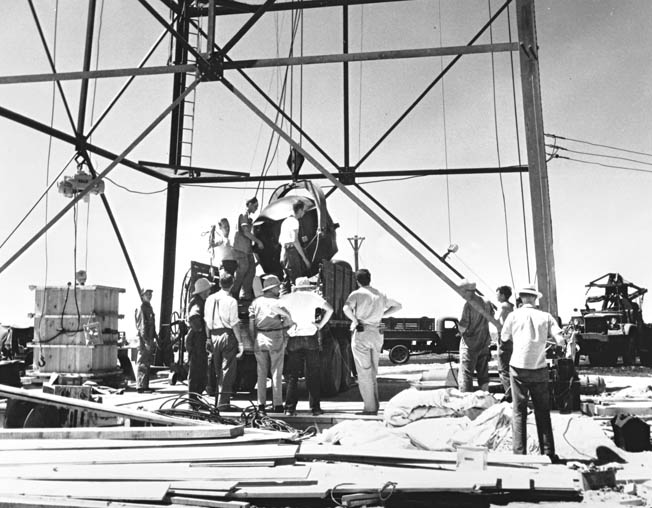
Equally troublesome was the bomb’s gumball-sized initiator (code named “urchin”), which lay within the plutonium core and would start the release of neutrons. A brave Canadian scientist named Louis Slotin spent his days at a gunmetal desk, pushing toward each other, then quickly separating, two hemispheres of plutonium. He was trying to figure out exactly how much of the volatile element would be needed for the shot.
Nobody had a more dangerous job. “Tickling the dragon’s tail,” it was called. On May 21, 1946, Slotin was still tickling. His screwdriver slipped, the hemispheres joined for a split second of criticality, and Slotin, who threw his body over the hemispheres even as he wrenched them apart, died an agonizing and secret death nine days later.
It was serious and sophisticated work. Preparing the test bomb gave the scientists a sense of masculine power. They named their bombs Little Boy and Fat Man and planned to label any unsuccessful test device “a girl.” The work allowed them to presume to control nature. Nuclear energy was the fundamental force in the universe; to command it “in a pint pot,” according to physicist Freeman Dyson, was to “produce an illusion of illimitable power.”
Testing the Bomb
Oppenheimer called the test site (and ultimately the shot itself) “Trinity,” inspired by the “three-person’d God” of a John Donne sonnet.
Preparation for the test was, at times, almost shockingly quotidian. Once the Trinity bomb was under assembly, scientists found several holes in its volatile core, which they plugged with shreds of facial tissue. Some of the bomb’s detonator charges required snugging by means of Scotch tape. The bomb was taken by car and truck to the test site at Alamogordo, 200 miles south of Los Alamos; the core, separated of course from the rest of the assembly, traveled in two suitcases with thermometers attached.
As the test bomb (nicknamed the “gadget”) was hoisted into a tower, wherein it was to be detonated, technicians threw dozens of Army-issue mattresses beneath it, hoping to cushion it if it tore loose from its fittings and plunged to earth.
As the bomb lay in place throughout the day and night of July 14, thunderstorms sparked throughout the area, making the scientists jittery and more than once inspiring them to gallows humor.
Through the day and night they figuratively held their breath. Groves fretted about the unstable weather and unhappily contemplated postponing the test. Oppenheimer, agitated, worried that postponement would mean that “I’ll never get my people up to pitch again.”
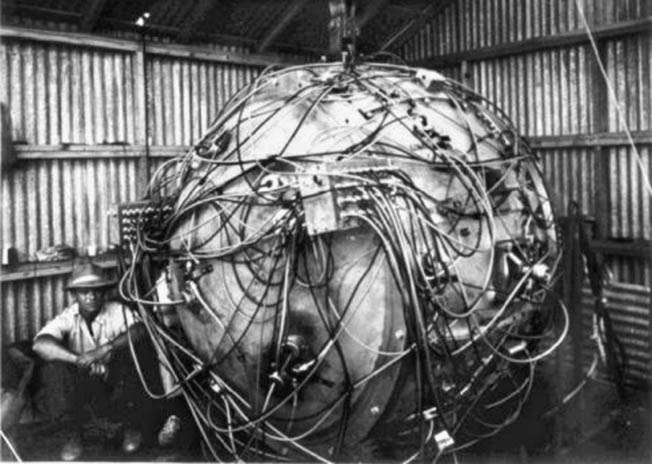
Vannevar Bush, head of the U.S. Office of Scientific Research and Development, on site for the shot, was awakened prematurely when the wind blew down his tent; he gave up on sleep and walked to the makeshift mess hall for breakfast at 3:45 am on July 16.
Men chain smoked and drank coffee. Enrico Fermi, oddly, tore a piece of paper into scraps. After the blast, he would use these as primitive but effective indicators of the test bomb’s power. At 4:45 am, project meteorologists reported a short break in the storms; Groves and Oppie decided to test Trinity at 5:30.
Those witnessing the test got pieces of smoked welder’s glass through which to watch. One of the scientists, Richard Feynman, refused to use his, reasoning that at a distance of 20 miles his eyes would be protected sufficiently by the windshield of the truck in which he sat. Edward Teller, on the other hand, put on gloves, a pair of sunglasses under the welder’s glass, and a generous portion of antisunburn cream.
Samuel Allison, from Chicago’s Met Lab, read the countdown on a radio station that crossed frequencies with another playing a Tchaikovsky serenade, which provided surreal background music for Allison’s steady voice. At 5:20 am, Allison reached zero. A split second later, ground and heaven burst open.
The Trinity shot produced a light brighter than any seen previously in the world, bright enough to have been seen from space. Its core temperature was four times greater than that at the center of the sun. The pressure from the blast was unprecedented; the radioactivity it threw off, as journalist and A-bomb historian Lansing Lamont calculated, was a million times more than that emitted by all the radium on earth.
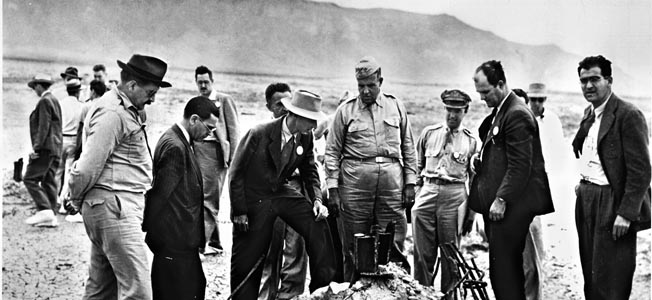
The light, then blast wave, reached Groves, Bush, and James Conant, president of Harvard University and head of the National Defense Research Committee, lying side by side and facing away from the tower at a distance of about 16,000 yards. The men shook hands, then Groves said, “We must keep this whole thing quiet.” An Army major was standing next to Groves. “Sir,” he said, “I think they heard the noise in five states.”
If not quite that, Trinity nevertheless drew a good deal of attention. An 18-year-old blind woman named Georgia Green, in a car with her brother-in-law on the road to Albuquerque, registered the bomb’s light. Windows broke in Texas, terrified people called police or newspaper offices to report an earthquake or plane crash and a New Mexico man found himself shivering in bed, the sheets and blankets having been blown off him. Groves put it out that an ammunition dump had exploded.
Oppenheimer thought of a regnant Brahma from the epic Mahabharata: “Now I am become Death, the destroyer of worlds.”
“A foul and awesome display” was Harvard physicist Kenneth Bainbridge’s verdict. Fermi, seemingly oblivious to the light and heat and shock, dropped his paper scraps and watched as the blast wave carried them. Cocky Richard Feynman turned away, temporarily blinded. Others cheered and danced.

Groves included in his post-test report an account written by Brig. Gen. Thomas E. Farrell, who had witnessed the explosion from the Alamogordo control room 10,000 yards south of the blast site. “The effects,” wrote Farrell, “could well be called unprecedented, magnificent, beautiful, stupendous, and terrifying. The whole country was lighted by a searing light with the intensity many times that of the midday sun. It was golden, purple, violet, gray, and blue….
“Thirty seconds after the explosion came first the air blast pressing against people and things, to be followed almost immediately by the strong, sustained, awesome roar which warned of doomsday and made us feel that we puny things were blasphemous to dare tamper with the forces heretofore reserved to The Almighty,” said Farrell. “Words are inadequate tools for the job of acquainting those not present with the physical, mental, and psychological effects. It had to be witnessed to be realized.”
The Radioactive Cloud in New Mexico
As Groves struggled to contain information about the test—a harbinger of America’s efforts to prevent specific knowledge of the bomb’s works from reaching the international community once the war had ended—he faced a dangerous related problem. Soon after the shot was fired, Robert Wilson led an observation team north out of Trinity. Needles on the Geiger counters carried by the team members suddenly jumped. Radioactivity, in a reddish-brown cloud, was drifting north, threatening small communities and cattle ranches and raising the distressing possibility that these might have to be evacuated.
Updrafts from the narrow canyons intensified the winds and caused them to blow promiscuously across the area. The small town of Carrizozo was endangered, as were larger communities such as Coyote, Ancho, and Vaughn, 112 miles north of Trinity. A radiation monitor named Joe Hirschfelder drove through the worrisome landscape and returned to Base Camp with radioactive tires and a skin exposure reading so disturbing that he found it impossible to hitch a ride to Albuquerque with nervous colleagues, even after a shower.
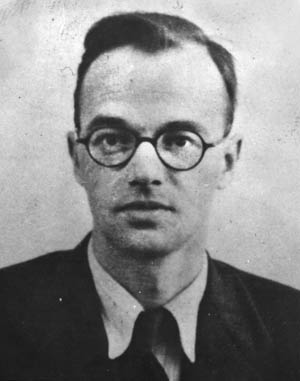
Several cattle ranches on a mesa west of Carrizozo were contaminated with radioactive ash, a circumstance the government labored to keep secret. Groves’s report to Stimson on the test did not alert the secretary to any potential problem with radioactivity from a bomb blast, though Groves admitted that assessments were not yet final.
At the site itself, among the scientists especially, reflection and sobriety soon set in. Initial jubilation gave way to a silent breakfast, for those with an appetite. Project director Kenneth Bainbridge shook hands with Oppenheimer and said to him quietly, “Now we’re all sons-of-bitches.”
Oppie discovered on the desert floor, where sand had been turned to glass, a turtle struggling on its back, having been overturned by the bomb’s blast wave. Oppie flipped him over and watched him scuttle away. “That’s the least I can do,” he thought.
“I am sure,” said Ukraine-born Harvard physical chemistry professor George Kistiakowsky after the test, “that at the end of the world—in the last millisecond of the earth’s existence—the last men will see what we saw.”
And yet they were at least sure of something else: that the atomic bomb would prove to be the winning weapon against the Japanese. When Thomas Ferrell saw Groves after the test, the first thing he said was, “The war is over.”
“Yes,” replied Groves, “after we drop two bombs on Japan.”
Discussing the Bomb at Potsdam
When Truman sat down at the summit conference in Potsdam, Germany, to discuss with Winston Churchill and Josef Stalin how Great Britain, the Soviet Union, and the United States planned to punish Germany and establish order out of war’s chaos, the radioactive dust was still settling in New Mexico. Truman’s spirits were buoyed by Stimson bringing the news of the successful Trinity test and also by Stalin’s assurance that the Soviet Union would declare war on Japan by the middle of August.
As secret coded reports from Alamogordo continued to arrive in Potsdam, carried by Stimson to Truman, Byrnes, and Churchill, the president’s confidence rose, and so did his doubts about the need for Soviet involvement in the war. By the 18th, Truman seemed to Stimson “greatly reinforced” in his determination to make the Soviets see reason. The next day, as he boasted to his wife Bess, he managed a “tough meeting” with the Russians when he “reared up … and told ‘em where to get off and they got off.”
Having received a final, detailed report on Trinity on the 21st, Truman turned even more bumptious, quarreling vigorously with Stalin on Germany and the political future of Eastern Europe. Churchill was surprised at Truman’s performance––until Stimson gave him a copy of the latest Trinity report the following day. “Now I know what happened to Truman yesterday,” the prime minister said. “When he got to the meeting after having read this report he was a changed man. He told the Russians just where they got on and off and generally bossed the whole meeting.”
At 7:30 in the evening of July 24, the eighth plenary session of the Potsdam Conference took a recess. Instructing Charles Bohlen, his Russian interpreter, to stay put, Truman walked across the room to Stalin, turned him away from the group, and told him with a casualness that was clearly strained that the United States had “a new weapon of unusual destructive force.”
According to Truman, Stalin replied that “he was glad to hear it and hoped we would make ‘good use’ of it against the Japanese.” Truman and the other U.S. officials thought Stalin’s reply indicated that he did not know what weapon the president was talking about—no more, that is, “than the man in the moon,” as Truman said later.
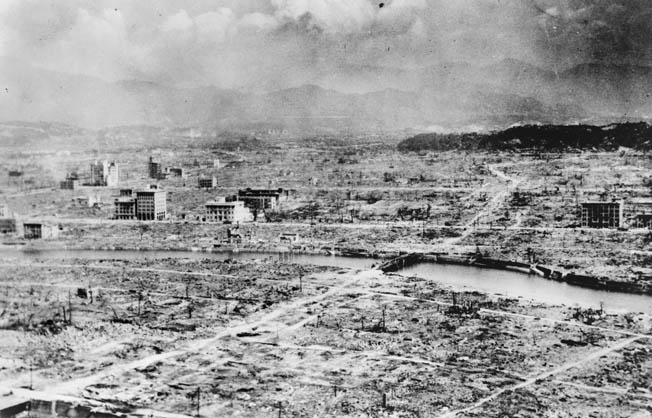
They were wrong. Stalin had in June received information, gleaned from Soviet spy Klaus Fuchs at Los Alamos, that a bomb test was scheduled for later in the summer.
Dropping the Bomb
From the Potsdam Conference came a declaration to the Japanese that they must still surrender unconditionally but offering the promise that Japan’s Emperor Hirohito would escape punishment, removal from office, or humiliation if the offer were accepted.
When the Japanese government did not immediately accept the Potsdam Declaration—Prime Minister Kantarō Suzuki reportedly said, on July 28, that Japan would ignore it—the Americans moved ahead with their plans to drop an atomic bomb on their first target city, Hiroshima.
The uranium core of the bomb, encased in a cylinder of lead and weighing 300 pounds, had left San Francisco on the day of the Trinity shot and sailed for Tinian Island in the Marianas, seized from Japan the previous summer. Tinian was the home of the Air Force’s 509th Composite Group, members of which had been designated and trained to deliver the bomb.
Carried by an aging and ill-fated cruiser, USS Indianapolis, the carefully cosseted core of the world’s first combat atomic bomb arrived on Tinian on July 26, the day the Potsdam Declaration was issued. It was joined to the rest of the bomb assembly on August 1 in an air-conditioned hut. When finished, the bomb, nicknamed Little Boy, looked like … a bomb. It was 14 feet long, five feet in diameter, and weighed approximately 10,000 pounds.
Colonel Paul Tibbets would command the B-29, dubbed Enola Gay, that would carry Little Boy to its target. Delivery was set for August 6, as long as the weather cooperated. The bomb’s proximity fuse, set for an altitude of about 1,800 feet, was designed to touch off a small explosion at the rear of the bomb, which would send a uranium bullet at the rear of the bomb hurtling toward the bomb’s nose. There it would collide with a “cap” of fraternal U-235.
If all went as planned, that would ignite an atomic explosion that would destroy the center of Hiroshima and transform the world.
After Little Boy was hoisted into Enola Gay’s forward bomb bay and secured, Tibbets and his crew tried to grab some sleep, but it was impossible. The final briefing came at midnight. Tibbets blandly repeated his description of the bomb they carried as “very powerful,” and the Lutheran chaplain on base prayed with the crew that “they bring this war to a rapid end.” After breakfast, the men were driven to their B-29s at 2 am. Photographs were taken of Enola Gay’s crew, after which they climbed into their plane.
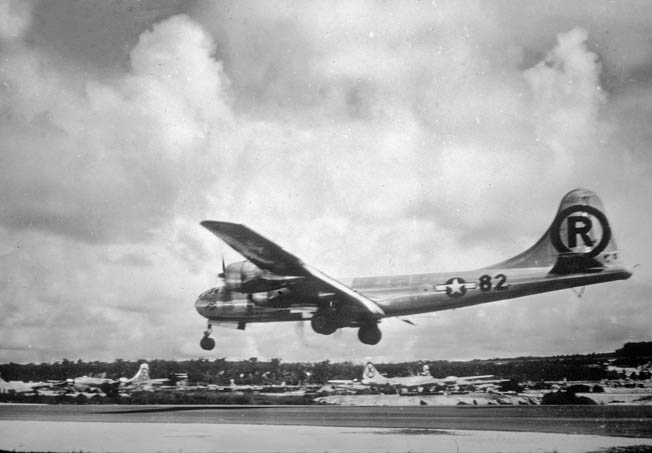
The men all had pistols, and Tibbets secretly carried a metal box holding 12 cyanide capsules; if the plane went down over Japan, any crewman left alive would choose suicide by self-inflicted bullet or self-administered poison.
“Let’s go,” said Tibbets at 2:45, and he throttled his plane forward. It was heavy, some 15,000 pounds over spec with its weighty bomb and extra fuel, and Tibbets badly frightened co-pilot Robert Lewis by using nearly all of Runway A to gain speed. At what seemed the last second, Tibbets lifted the plane’s nose, and the Enola Gay rose over the night sea, flying northwest at low altitude to save fuel and ease the task of Deke Parsons, who would arm the bomb in the air and who was squatting behind the bomb in the unpressurized bomb bay.
More than four hours later, another B-29, named Straight Flush, overflew Hiroshima and sent word to Tibbets that the skies above the target were mostly clear. Tibbets committed to his course and brought his plane to bombing altitude, 31,000 feet. Nearing Hiroshima, the Enola Gay rendezvoused with two other B-29s, the Great Artiste and No. 91, the instrument and photo planes. Everything was ready.
At 8:15 am Hiroshima time, Enola Gay’s bomb bay doors opened and Little Boy plummeted earthward; Tibbets banked hard to get away from the shock wave. Forty-three seconds later, the city of Hiroshima and thousands of its citizens were obliterated.

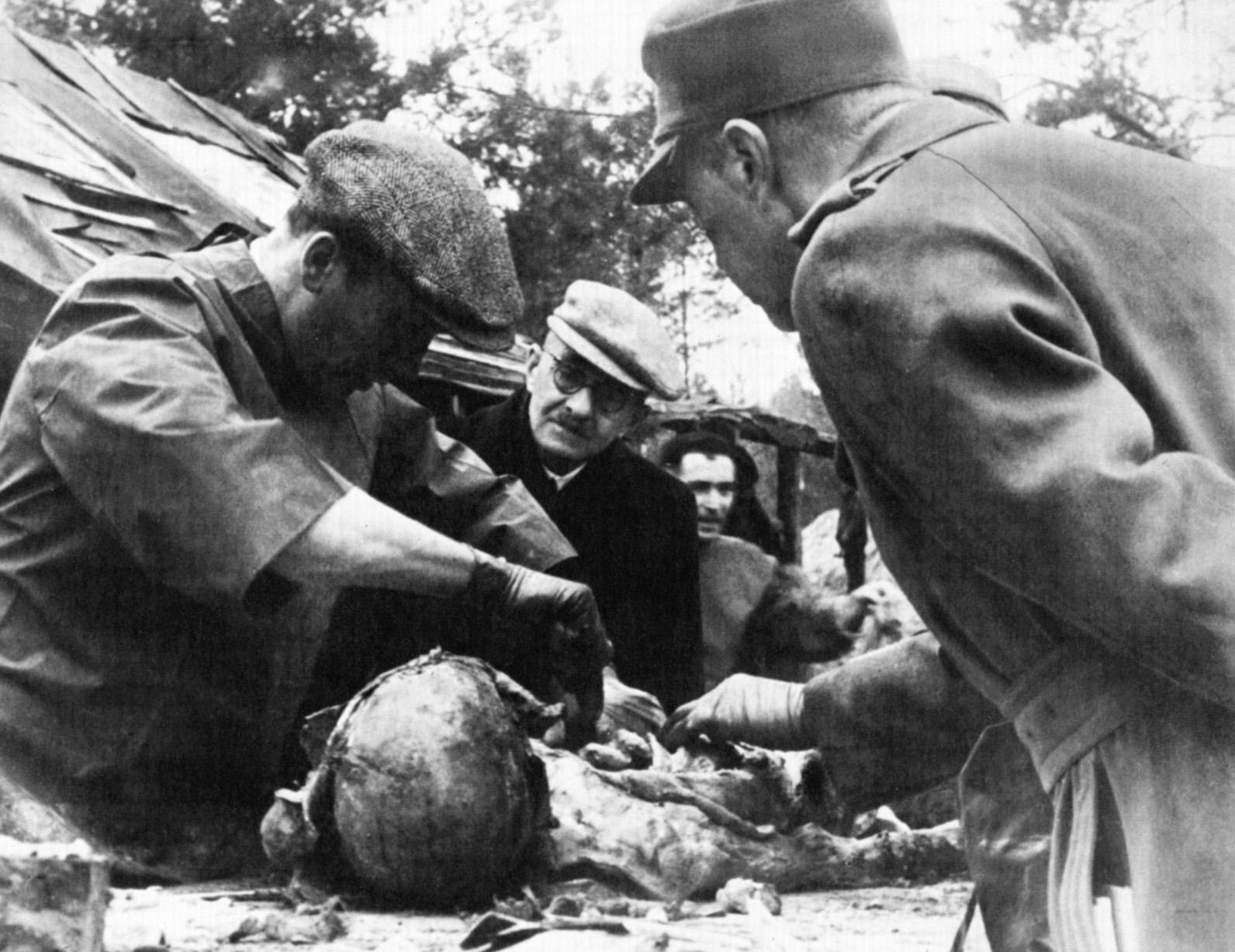
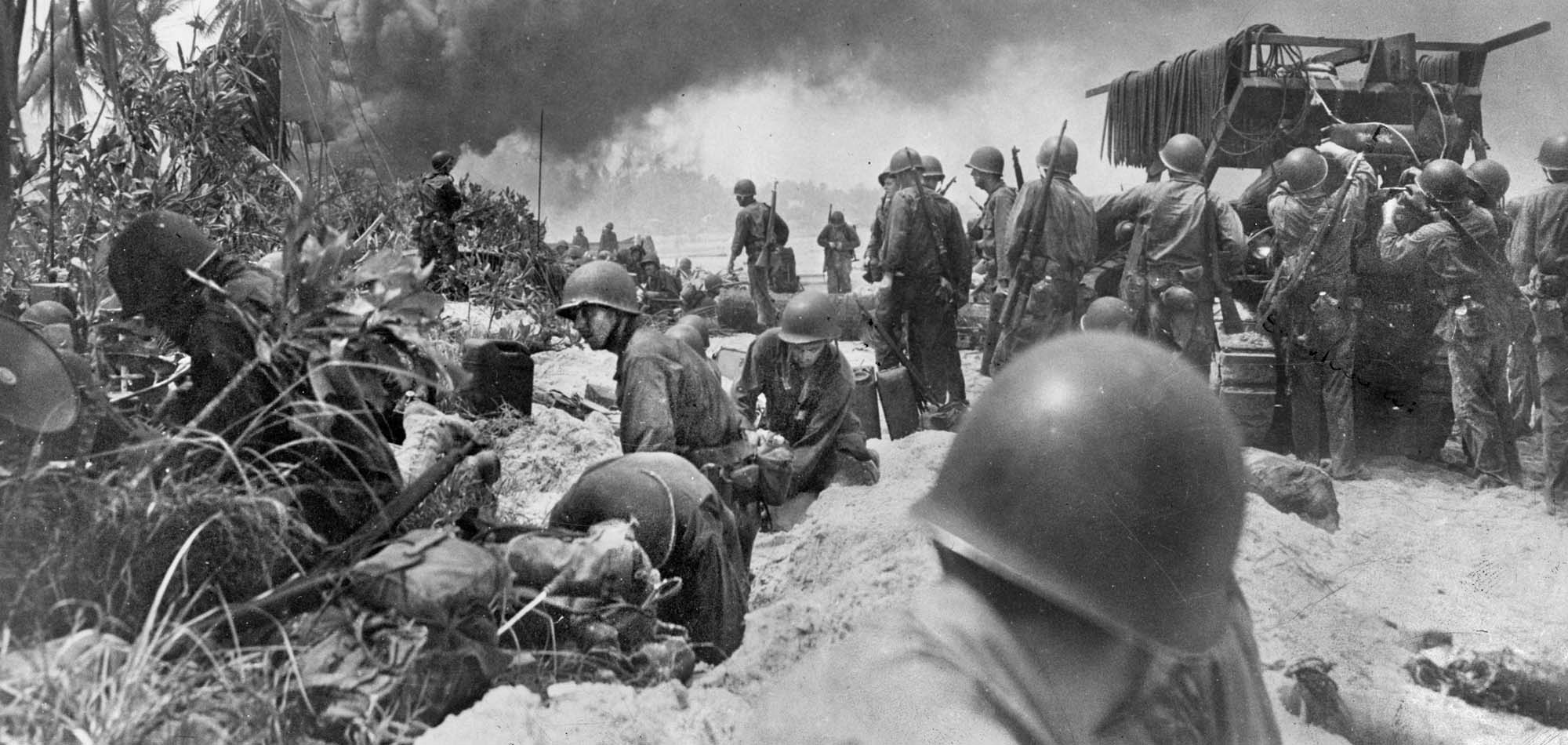
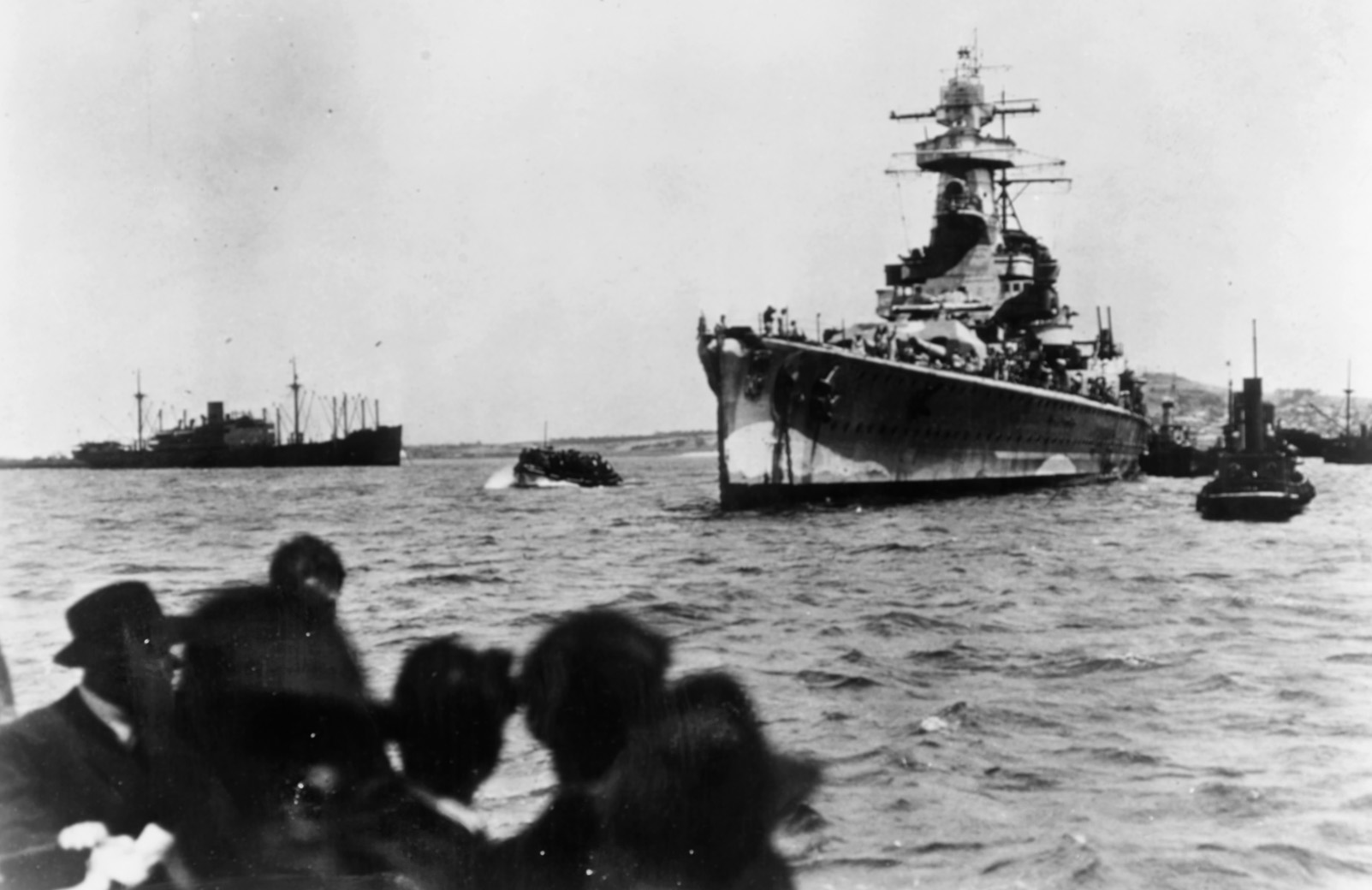
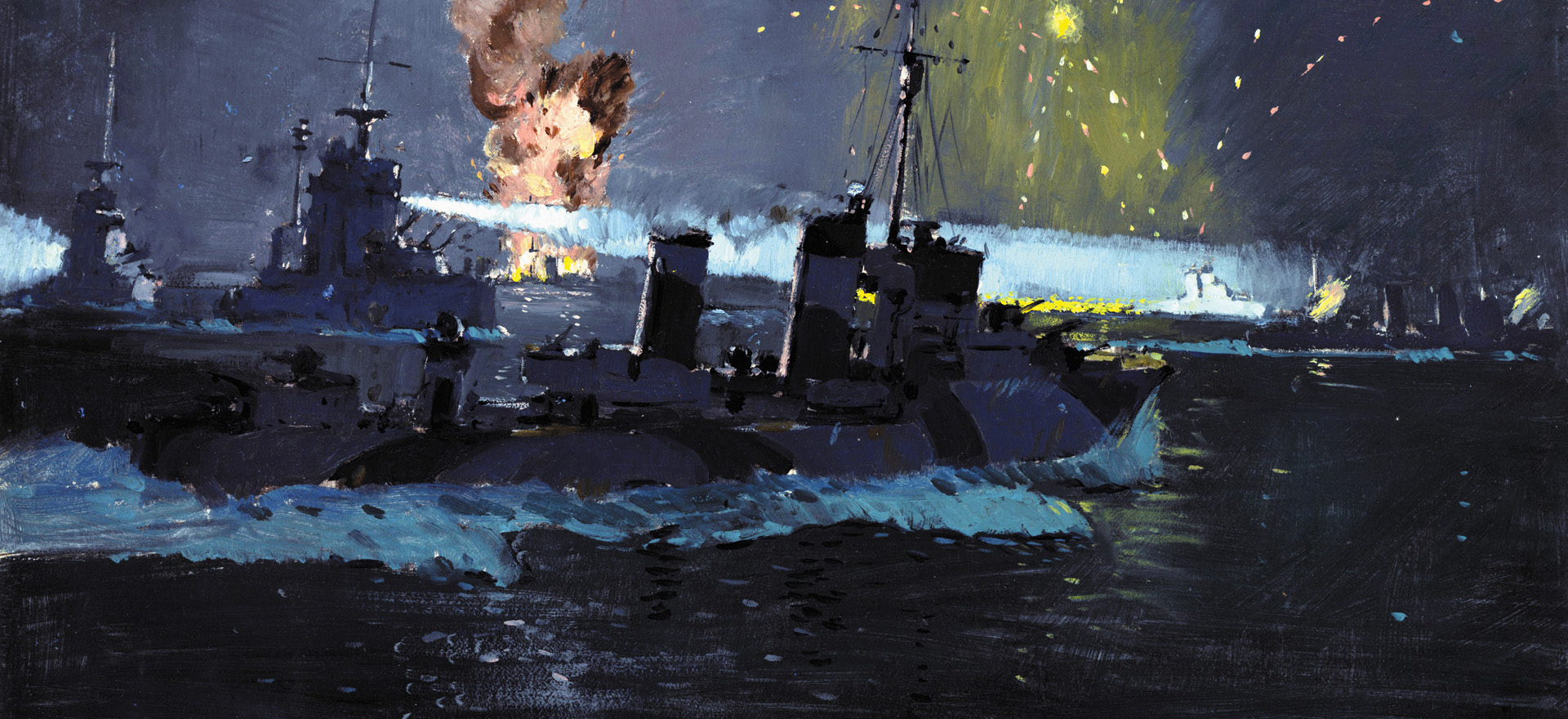
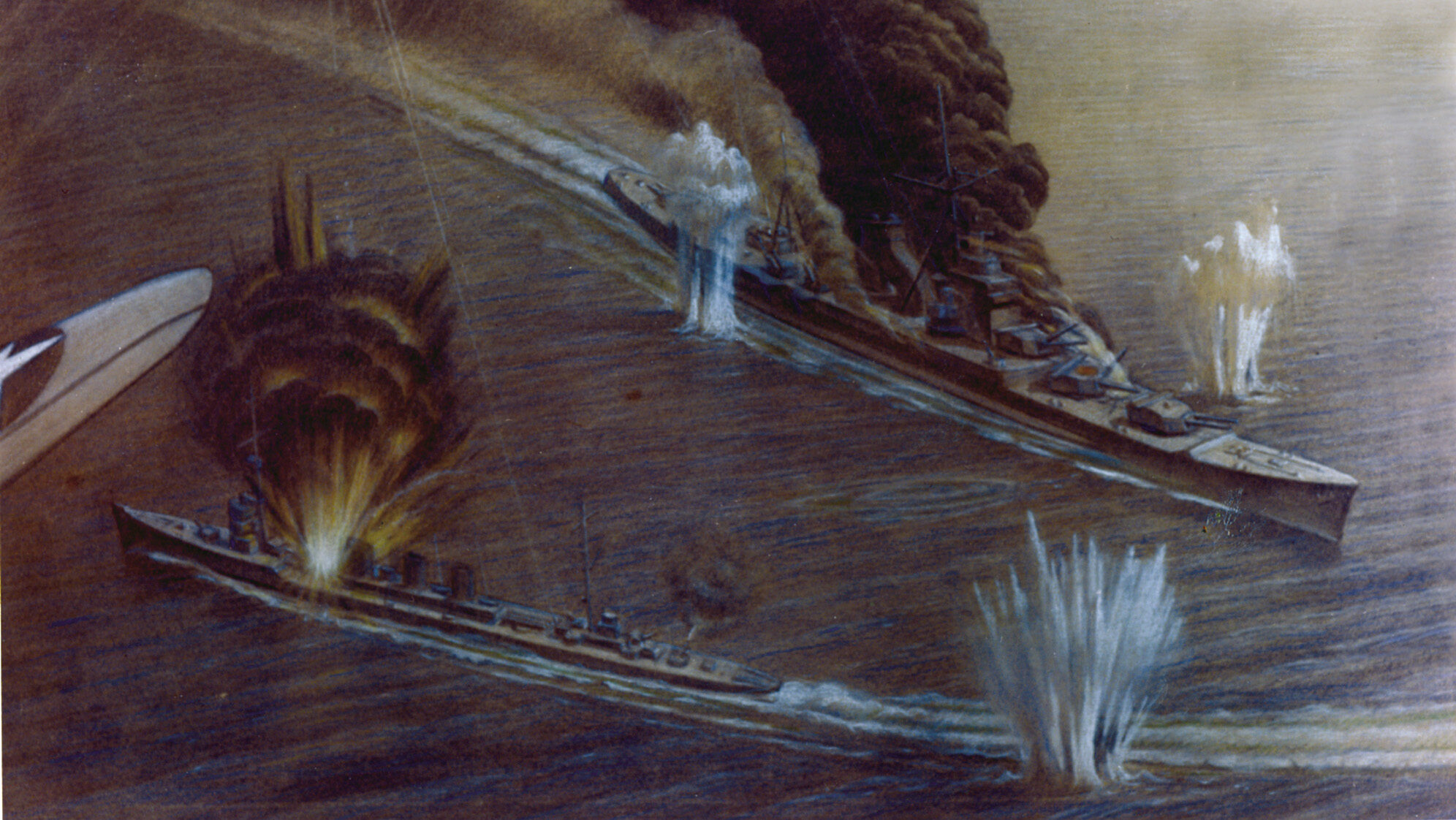
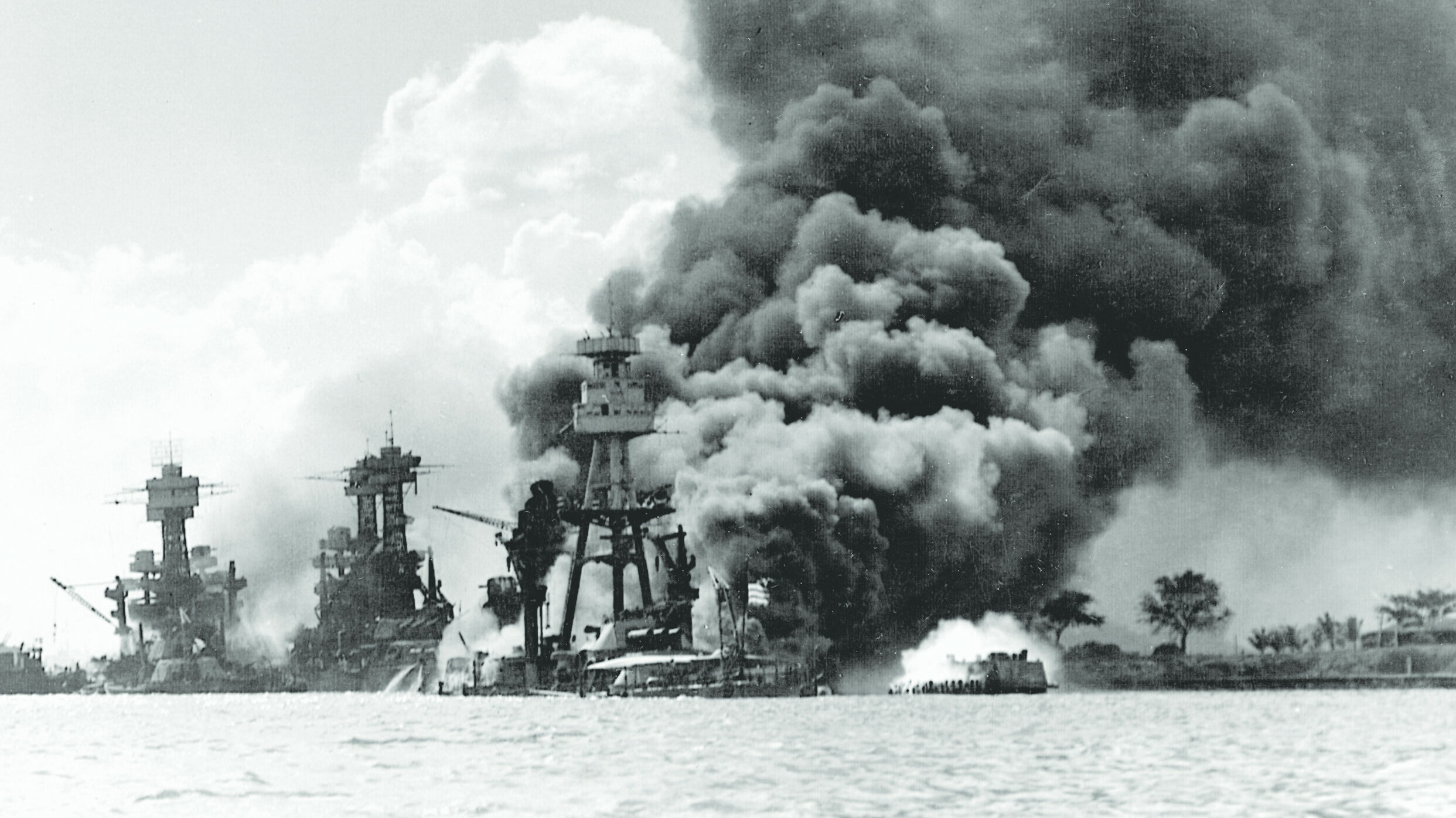
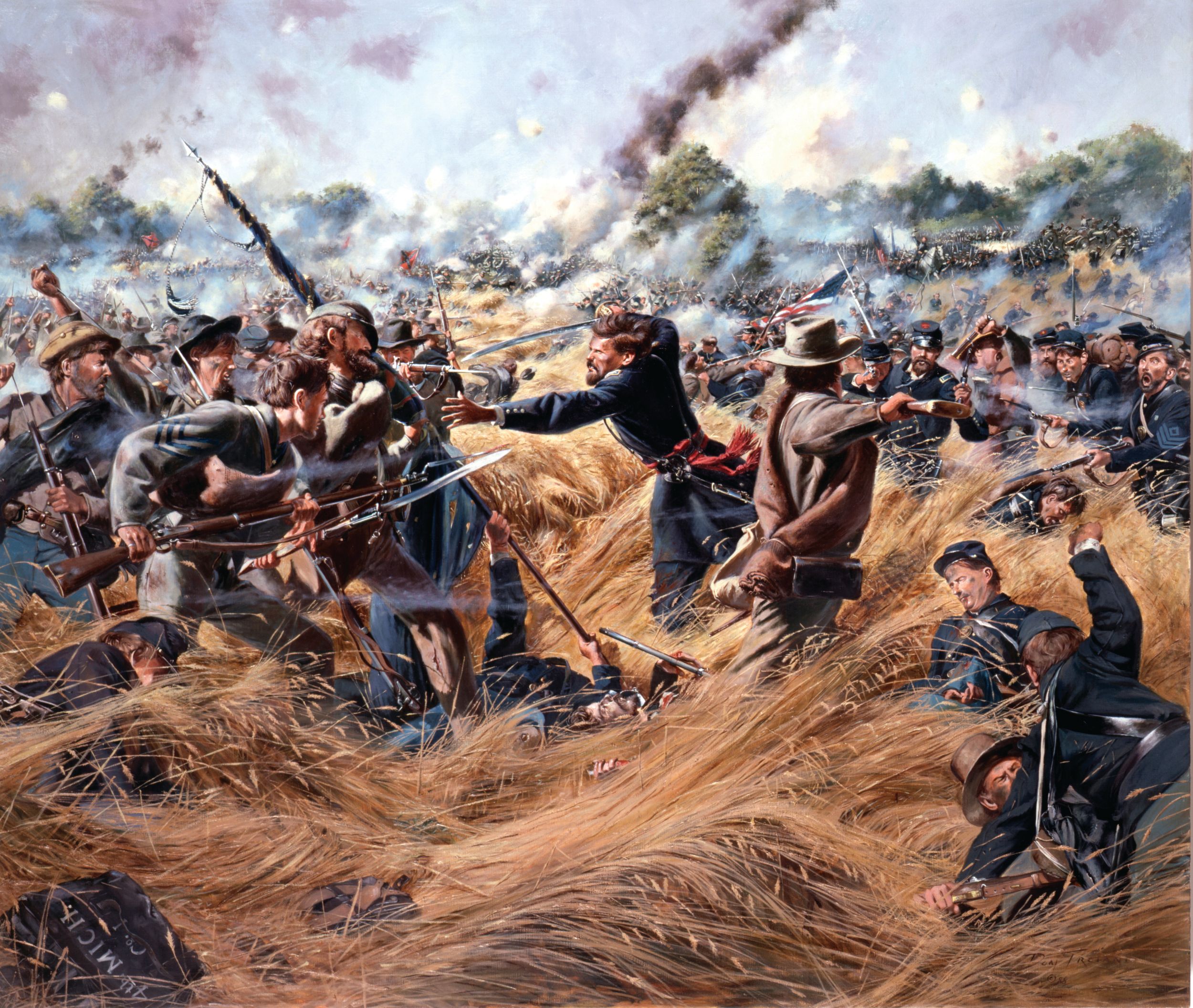
With the benefit of hindsight, it probably would have been less controversial to drop the bombs on a couple of military bases even though their usefulness to the Japanese was rapidly declining. It would have demonstrated what awaited the whole country without the amount of civilian dead that resulted from Hiroshima and Nagasaki. Of course, at the time there was also the matter of the prisoners that Japan held from the US, Britain, Netherlands and the colonials. The Japanese had threatened to kill all as they did on Palawan in the Philippines. No one has ever improved on Sherman’s description of war.
In the caption the names of Karl Compton and Arthur Compton are reversed
Thanks for that correction. The caption has been updated.
The decision to drop the bomb on Japan was the right one, saved millions of lives, American and Japanese. Even after having cities firebombed to ashes, the Japanese were still fighting and planning to vigorously resist an invasion. It took a weapon like the atomic bomb to get the Japanese to see the game was over. And nuclear weapons have not been used in any war anywhere since, which says a great deal to me.